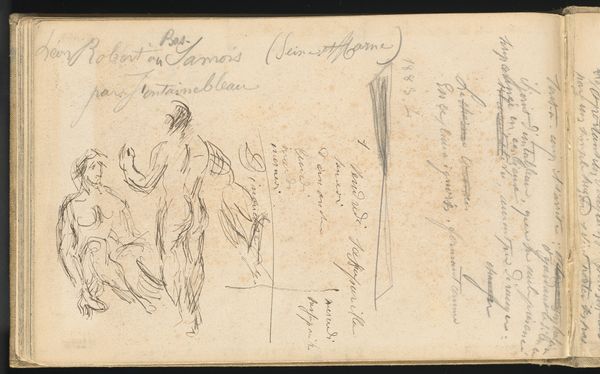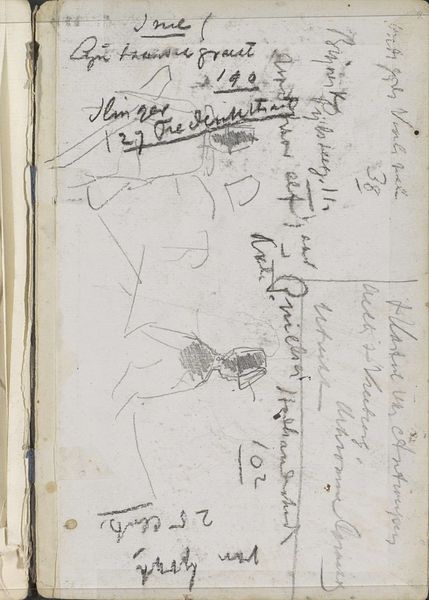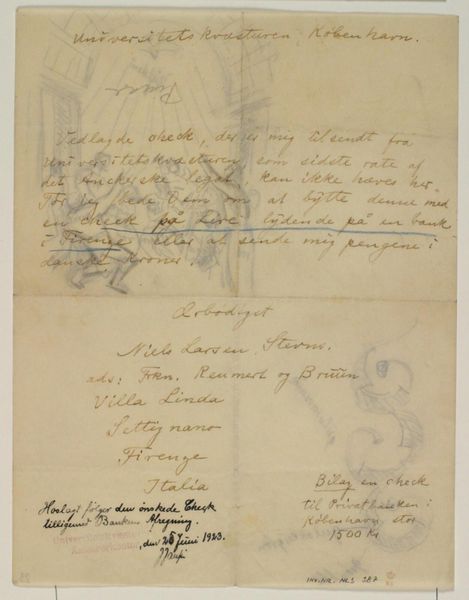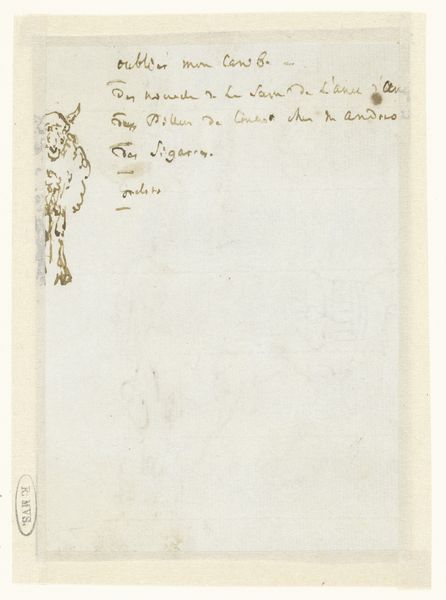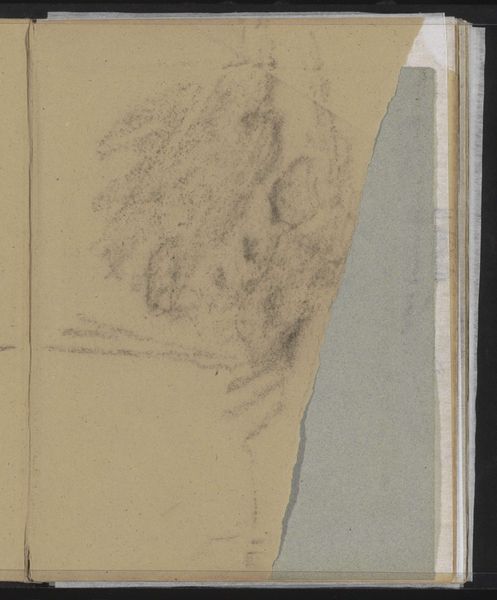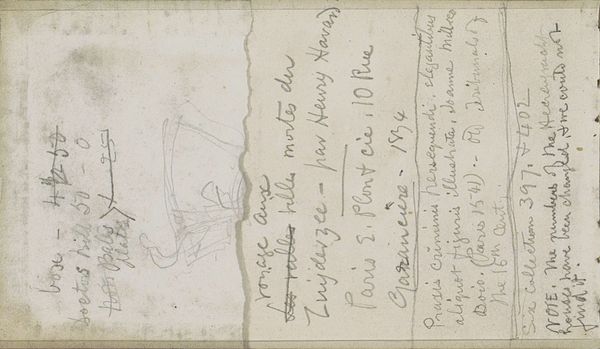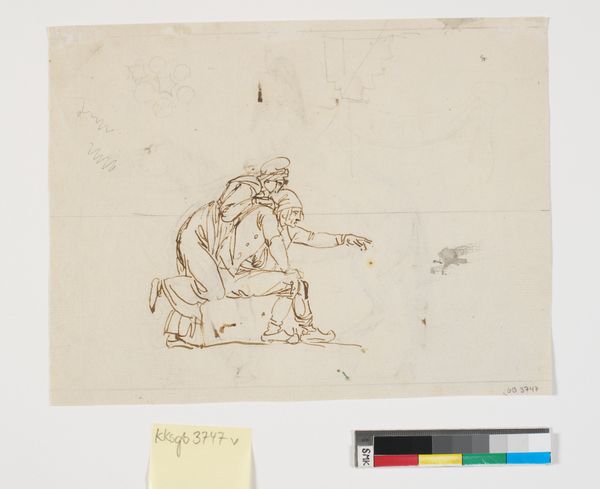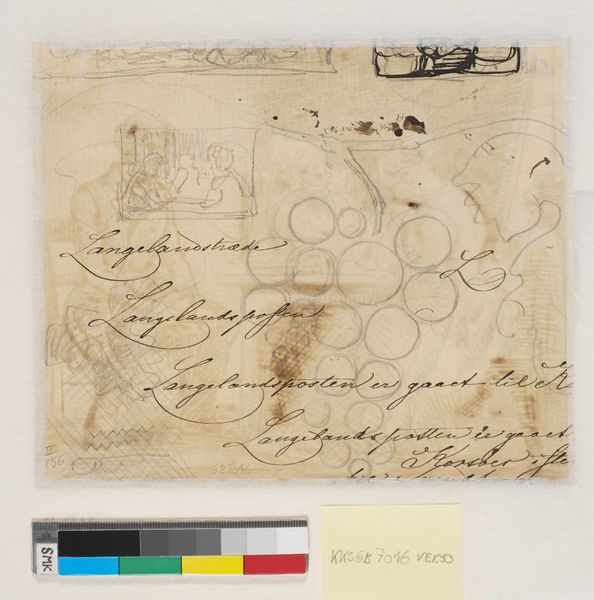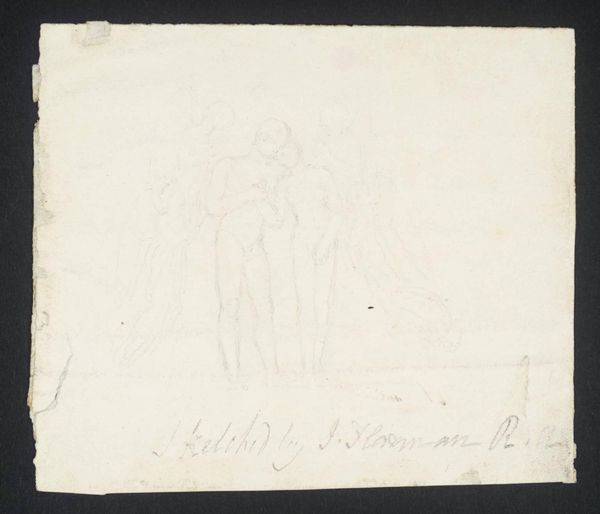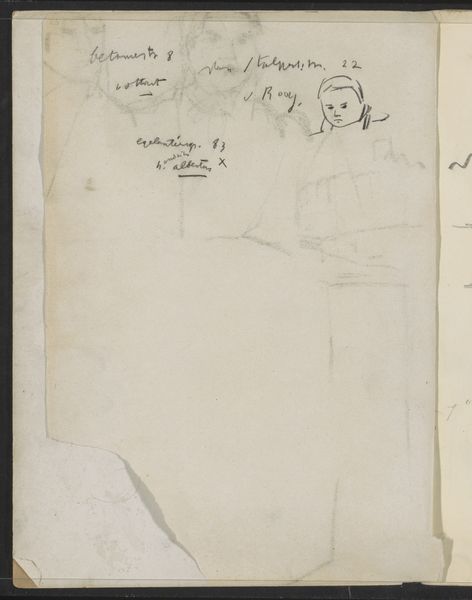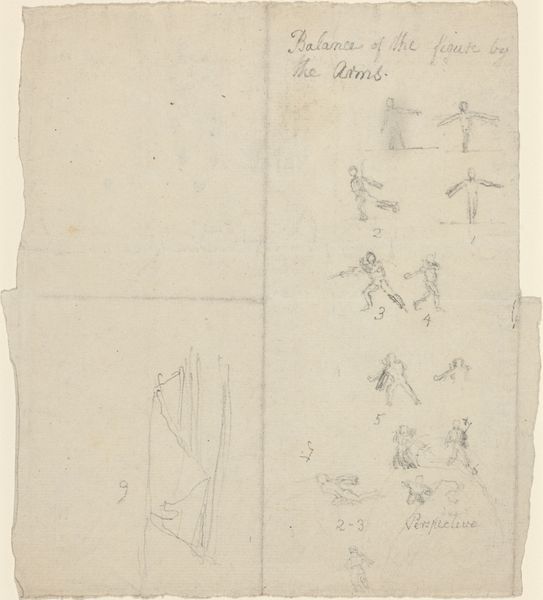
Udkast til dørstykke af den katolske religion 1802 - 1805
0:00
0:00
drawing, ink
#
drawing
#
figuration
#
ink
#
romanticism
#
watercolor
Dimensions: 141 mm (height) x 231 mm (width) (bladmaal)
Curator: Nicolai Abildgaard created this ink and watercolor drawing, "Udkast til dørstykke af den katolske religion," between 1802 and 1805. It currently resides at the SMK, the National Gallery of Denmark. Editor: It looks like a preliminary sketch, with a sense of immediacy conveyed through the raw, almost frantic lines. Curator: Indeed. Abildgaard was known for his neoclassical and Romantic style, emphasizing form and composition. Note the figure's carefully posed contrapposto. The minimal use of color—just washes of ink—underscores the linearity and reinforces the emphasis on form over pure surface effect. Editor: I see more than mere formalism here. It is clearly a study but reveals a glimpse into Abildgaard's working process. The material constraints are visible; the economical use of ink, the rapid strokes, hint at a scarcity or perhaps just an urgency. It almost feels as if this drawing functions like a material meditation, grappling with complex ideas using the humblest of means. Curator: Intriguing perspective. Abildgaard was working in a time of upheaval. I find that the classical elements he employs are laden with complex allegory relating to the relationship of faith and order. There is an implied structural harmony reflected in the very act of drawing which lends a stability against external change. Editor: But what does it mean to focus on form when societal foundations were fracturing? I wonder if the materiality— the bare paper, the quick ink— offers us an immediate understanding of this era beyond just abstract aesthetics. The labor involved appears stark. Curator: An interesting lens for inquiry, considering the societal context in which it was made. Viewing this through material applications allows different interpretations regarding the work and artistic vision. Editor: This work shows so much when we examine materials and context! I come away understanding it not just as an aesthetic exercise, but also an exercise in economical expression. Curator: Yes, precisely! We can both appreciate its artistic merit and see it in a richer, socio-historical manner.
Comments
No comments
Be the first to comment and join the conversation on the ultimate creative platform.
